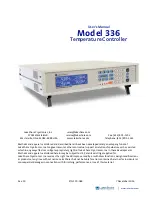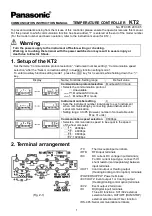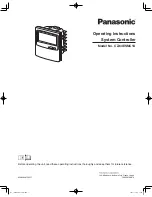
Curtis 1243
GEN
2 Manual
55
5 — VEHICLE PERFORMANCE ADJUSTMENT
VEHICLE PERFORMANCE ADJUSTMENT
The 1243
GEN
2 controller is a very powerful vehicle control system. Its wide
variety of adjustable parameters allow many aspects of vehicle performance to
be optimized. This section provides explanations of what the major tuning
parameters do and instructions on how to use these parameters to optimize the
performance of your vehicle. Once a vehicle/motor/controller combination has
been tuned, the parameter values can be made standard for that system or vehicle
model. Any changes in the motor, the vehicle drive system, or the controller will
require that the system be tuned again to provide optimum performance.
The tuning procedures should be conducted in the sequence given,
because successive steps build upon the ones before. The tuning procedures
instruct personnel how to adjust various programmable parameters to accom-
plish speci
fi
c performance goals. It is important that the effect of these pro-
grammable parameters be understood in order to take full advantage of the
controller
’
s features. Please refer to the descriptions of the applicable parameters
in Section 3 if there is any question about what any of them do.
The 1243
GEN
2
’
s MultiMode
™
feature allows the vehicle to be con
fi
gured
to provide four distinct operating modes. Typically Mode 1 is con
fi
gured for
slow precise indoor maneuvering, Mode 4 for faster, long distance, outdoor
travel, and Modes 2 and 3 for application-speci
fi
c special conditions. Some of
the tuning procedures may need to be repeated four times, once for each mode.
MAJOR TUNING
Four major performance characteristics are usually tuned on a new vehicle:
1
Tuning the Throttle
’
s Active Range
2
Tuning the Controller to the Motor
3
Setting the Vehicle
’
s Unloaded Top Speed
4
Equalization of Loaded/Unloaded Vehicle Speed.
These four characteristics should be tuned in the order listed.
1
Tuning the Throttle’s Active Range
Before attempting to optimize any speci
fi
c vehicle performance characteristics,
it is important to ensure that the controller output is operating over its full range.
The procedures that follow will establish Throttle Deadband and Throttle Max
parameter values that correspond to the absolute full range of your particular
throttle mechanism. It is advisable to allow some buffer around the absolute full
range of the throttle mechanism to allow for throttle resistance variations over
time and temperature as well as variations in the tolerance of potentiometer
values between individual throttle mechanisms.
5
















































